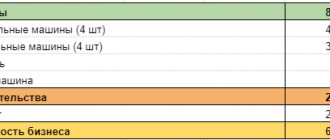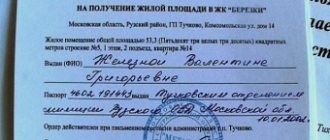The income approach to assessing the value of income-producing real estate allows you to determine its value at the time of assessment as a source of future income:
- this approach reflects the potential profit from the operation of a real estate from the date of assessment until the completion of the operation process;
- risks inherent to the property and the region in which the property is located.
This approach is used to determine:
- investment value, because there is no point in paying more for real estate than it can bring in profit;
- market value.
Content
- 1 3.1. Potential Gross Income
- 2 3.2. Actual gross income
- 3 3.3. Operating expenses
- 4 3.4. Net operating income
- 5 3.5. Functions of compound interest
- 6 3.6. Discount and capitalization rate (cumulative construction method, market extraction method)
- 7 3.7. Direct capitalization method for assessing the market value of a property
- 8 3.8. Mortgage and investment analysis
- 9 3.9. Discounted Cash Flow Method
- 10 3.10.Methods of capitalization using calculation models
- 11 3.11. Rate of return on capital (Ring, Hoskold, Inwood methods)
3.1. Potential Gross Income
Potential gross income (PVI) is the income that an object is capable of generating when renting it or its elements and receiving rent in full:
PVD = AC × N {\displaystyle PVD=AC\times N}
where: AC {\displaystyle AC} – rental rate, monetary unit/unit area/year; N {\displaystyle N} – Quantitative characteristics of the object, for example, units, sq.m.
The relationship between PVD and other levels of income from the operation of the facility is described by the following formulas:
PVD − NZ − NP + DXPR = DVD {\displaystyle PVD-NZ-NP+DX_{PR}=DVD}
DVD − OR − RZ = CHOD {\displaystyle DVD-OR-RZ=CHOD}
where: PVD {\displaystyle PVD} – potential gross income, monetary units; NZ {\displaystyle NZ} – losses from underload, monetary units; NP {\displaystyle NP} – losses from non-payments, monetary units; DXPR {\displaystyle DX_{PR}} – other income from the normal market use of the property, monetary units; DVD {\displaystyle DVD} – actual gross income, monetary units; OP < {\displaystyle OP<} – operating expenses, monetary units; PZ {\displaystyle PZ} – replacement costs, monetary units; CHOD {\displaystyle CHOD} – net operating income, monetary units.
What to pay attention to in valuation practice: when determining income from renting out real estate, it is necessary to comply with the correspondence between the rental rate and the base for its calculation. The rental rate for the total area corresponds to the total area, for the usable area - to the usable area. Usable (rentable area) is the area of a property that can be rented out. Rentable area ratio of a building - the ratio of the area that can be rented out to the total area of the building
conclusions
The income approach to business and real estate valuation has become much less common, and this happens for many reasons. In particular, this concerns the shortcomings that make it difficult to use in the consumer market. First of all, it should be noted how difficult it is to make forecasts of the future cost of services and products, materials and raw materials, as well as a set of other cost indicators. At the same time, we can talk about some subjectivity of expert assessments. In addition, the problem is the low disclosure of information on Russian enterprises, but it is necessary for carrying out competent calculations and drawing up the Black-Scholes model. This is largely due to the low corporate culture of such enterprises.
The overwhelming number of shares, including large blocks of shares, is concentrated in the hands of a small circle of persons, and the share of minority shareholders and small owners, whose share is very small, in the authorized capital is insignificant. It turns out that many enterprises are simply not interested in disclosing any information. That is why the calculation by the income approach becomes noticeably more complicated in relation to most industries and businesses in Russia. In other conditions, it works best, demonstrating all its advantages and reliability.
3.2. Actual gross income
Actual gross income (AGI) is potential gross income (PVI) minus losses from underutilization, non-payment of tenants, and also taking into account additional types of income.
The relationship between DVD and other levels of income from the operation of real estate is described by the following formulas:
PVD − NP − NZ + DXPR = DVD {\displaystyle PVD-NP-NZ+DX_{PR}=DVD} DVD − OP − PZ = CHOD {\displaystyle DVD-OP-PZ=CHOD}
where: PVD {\displaystyle PVD} – potential gross income, monetary units; NP {\displaystyle NP} – losses from non-payments, monetary units; NZ {\displaystyle NZ} – losses from underload, monetary units; DXPR {\displaystyle DX_{PR}} – other income from the normal market use of the property, monetary units; DVD {\displaystyle DVD} – actual gross income, monetary units; OP {\displaystyle OP} – operating expenses, monetary units; PZ {\displaystyle PZ} – replacement costs, monetary units; CHOD {\displaystyle CHOD} – net operating income, monetary units.
What to pay attention to in valuation practice: when determining income from renting out real estate, it is necessary to comply with the correspondence between the rental rate and the base for its calculation. The rental rate for the total area corresponds to the total area, for the usable area - to the usable area.
Usable (rentable area) is the area of a property that can be rented out.
Rentable area ratio of a building - the ratio of the area that can be rented out to the total area of the building
Changes in approach choice
According to paragraph 65 of IFRS 13, valuation methods (approaches) used to determine fair value must be applied consistently in each reporting period. However, using a different approach or changing the application of an old approach is acceptable if the change results in a more accurate and appropriate measurement of fair value in the circumstances. Such a need may arise, for example, when new markets emerge, new information appears, or market conditions change. Changes resulting from the application of a different measurement method are accounted for as changes in accounting estimates in accordance with IAS 8.
In conclusion, it is important to reiterate that the selection and proper use of a fair value measurement method requires a high level of valuation skill, in-depth knowledge of the asset, liability or business being valued, and extensive exercise of professional judgment. Therefore, it is advisable to involve professional appraisers when assessing expensive assets, liabilities or businesses. Also, other departments of the company should take part in the assessment process, depending on its structure - for example, the department responsible for the acquisition of assets and development of the company, budget and other departments.
3.4. Net operating income
Net operating income (NOI) is the actual gross income from an income-producing property less operating expenses and replacement expenses.
The relationship between NPV and other levels of income from the operation of real estate is described by the following formulas: PVD − NP − NZ + DHPR = DVD {\displaystyle PVD-NP-NZ+DH_{PR}=DVD}
DVD − OP − PZ = CHOD {\displaystyle DVD-OP-PZ={CH}OD}
where: PVD {\displaystyle PVD} – potential gross income, monetary units; NP {\displaystyle NP} – losses from non-payments, monetary units; NZ {\displaystyle NZ} – losses from underload, monetary units; DHPR {\displaystyle DH_{PR}} – other income from the normal market use of the property, monetary units; DVD {\displaystyle DVD} – actual gross income, monetary units; OP {\displaystyle OP} – operating expenses, monetary units; PZ {\displaystyle PZ} – replacement costs, monetary units; CHOD {\displaystyle CHOD} – net operating income, monetary units.
3.5. Functions of compound interest
3.5.1.
Compound interest is a calculation model in which interest is added to the principal amount [of the deposit] and subsequently participates in the creation of new interest.
3.5.2.
Six functions of compound interest (assuming payments arise at the end of the relevant period):
Table 8
| No. | Function name | Calculation formula, example of solving a problem |
| 1 | Cumulative (future) unit amount | Shows the accumulation of 1 monetary unit. for the period: FV = PV × ( 1 + i ) t , {\displaystyle FV=PV\times (1+i)^{t},} where: FV – future value, den. units PV – current value, den. units i – accumulation (discounting) rate, fractions of units/time period t – time interval, time periods |
| 2 | Current unit cost | Shows the current value of 1 monetary unit, which arises in the future: PV = FV ( 1 + i ) t . {\displaystyle PV={\frac {FV}{(1+i)^{t}}}.} |
| 3 | Unit accumulation per period | Shows what the future value of a series of annuity payments will be after the entire period: FV = ( 1 + i ) n − 1 i × PMT , {\displaystyle FV={\frac {(1+i)^{n}-1}{ i}}\times PMT,} where: PMT – annuity payment, den. units Annuity – a series of equal periodic payments. |
| 4 | Indemnity Fund Factor | Shows the amount of a single annuity payment that is necessary in order to accumulate 1 monetary unit by the end of the period: PMT = FV × i ( 1 + i ) n − 1 . {\displaystyle PMT={\frac {FV\times i}{(1+i)^{n}-1}}.} |
| 5 | Present value of an ordinary annuity | Shows the value of the present value of future annuity payments: PV = PMT × 1 − ( 1 + i ) − ni . {\displaystyle PV=PMT\times {\frac {1-(1+i)^{-n}}{i}}.} |
| 6 | Unit depreciation contribution | Shows the amount of the future annuity payment required to fully amortize (repay) the loan: PMT = PV × i 1 − ( 1 + i ) − n. {\displaystyle PMT={\frac {PV\times i}{1-(1+i)^{-n}}}.} |
3.5.3.
Dependence between accumulation (discounting) rates for accrual periods of different lengths:
basic version
:
1 + it = T tsqrt ( 1 + it ) = ( 1 + i ) t T , {\displaystyle 1+i_{t}={^{\dfrac {T}{t}}sqrt{(1+i_{t })}}={(1+i)^{\dfrac {t}{T}}},}
simplified version
:
it = i T ( T t ) , {\displaystyle i_{t}={\frac {i_{T}}{({\displaystyle {\frac {T}{t}}})}},}
Where:
T – longer period of time;
t – shorter period of time.
Table 9
| Accumulation (discounting) rate | Calculation formula from the annual savings rate ( tgod {\displaystyle t_{god}} ) | |
| Normal option | Simplified version | |
| Menstrual | igod 12 {\displaystyle {\frac {i_{god}}{12}}} | |
| Quarterly | igod 4 {\displaystyle {\frac {i_{god}}{4}}} | |
| Semi-annual | igod 2 {\displaystyle {\frac {i_{god}}{2}}} | |
A simplified version is used for small bets / low requirements for calculation accuracy. For example, with an annual discount rate of 20%, calculating the monthly rate using the normal option will give the result in the amount of 1.531%, and in the simplified version – in the amount of 1.667%.
3.5.4.
Functions 2, 4, and 6 are inverses of 1, 3, and 5 (respectively) - if the direct one is forgotten, then it can be derived from the inverse (and vice versa).
3.5.5.
Examples of tasks.
Task 1.
What is the current value of 1,000,000 rubles that will be received in 5 years with an average annual inflation of 10%? Solution:
PV = 1000000 ( 1 + 0 , 10 ) 5 = 620921 {\displaystyle PV={\frac {1000000}{(1+0.10)^{5}}}=620921}
With a conditionally uniform distribution of cash flows over the period (0; t), discounting is carried out to the middle of the period, and the general formula is transformed as follows:
PV = FV ( 1 + i ) t − 0. 5 . {\displaystyle PV={\frac {FV}{(1+i)^{t-0.5}}}.}
Task 2.
Determine the current value of 1,000,000 rubles, which will be received within a year after the valuation date. Receipts are uniform throughout the year, the discount rate is 15% per annum. Solution: PV = 1000000 ( 1 + 0 , 15 ) 0 , 5 = 932505. {\displaystyle PV={\frac {1000000}{(1+0.15)^{0.5}}}=932505.}
When the discount rate changes over time (variable discount rate), the general formula takes the following form: PV = FV ( 1 + t 1 ) t 1 × ( 1 + i 2 ) t 2 × . . . × ( 1 + im ) tm {\displaystyle PV={\frac {FV}{(1+t_{1})^{t_{1}}\;\times (1+i_{2}\;)^{ t_{2\;}}\times …\times (1+i_{m}\;)^{t_{m}}}}}
where: i
m – discount rate in the time interval with tm fractions of units/period.
Task 3.
– determine the current value of a sum of money under the following conditions: FV = 200,000 rubles, t1 = t2 = 1 year, i1 = 15%/year, i2 = 20%/year.
Solution.
PV = FV ( 1 + i 1 ) t 1 × ( 1 + i 1 ) t 2 = 200000 ( 1 + 0 , 2 ) 1 × ( 1 + 0 , 15 ) 1 = 144928. {\displaystyle PV={\frac {FV}{(1+i_{1})^{t_{1}}\times (1+i_{1})^{t_{2}}}}={\frac {200000}{(1+0 ,2)^{1}\times (1+0.15)^{1}}}=144928.}
Explanation: for clarity, we will divide the discounting process into two stages: bringing FV to time t1; bringing FV1 to time 0: PV = FV ( 1 + i 2 ) t 2 − t 1 = 200000 ( 1 + 0 , 2 ) 1 = 166667 {\displaystyle PV={\frac {FV}{(1+i_{ 2})^{t_{2}-t_{1}}}}={\frac {200000}{(1+0.2)^{1}}}=166667} PV = FV 1 ( 1 + i 1 ) t 1 = 166667 ( 1 + 0 , 15 ) 1 = 144928 {\displaystyle PV={\frac {FV_{1}}{(1+i_{1})^{t_{1}}}}={\ frac {166667}{(1+0.15)^{1}}}=144928}
3.5.6.
What to pay attention to in valuation practice: the values of the accumulation rate and the time period must correspond to each other. The monthly rate corresponds to a period of time in months; annual – in years, etc.
Let's summarize
- Assessing the value of a business is a complex process that may be necessary when selling a company, insuring it, or attracting investments.
- The owner can periodically evaluate his business to observe dynamics.
- Three approaches are used in the assessment: costly (how much money is needed to recreate the same business), profitable (the business is assessed based on profit) and comparative (the company is compared with similar ones).
- For a more accurate assessment, it is better to use two different methods; if the results are close, everything was done correctly. A large difference in assessment indicates a distortion of the result.
3.7. Direct capitalization method for assessing the market value of a property
The direct capitalization method is a special case of the discounted cash flow method. It is used when the valuation object generates net operating income, the value of which is either relatively constant or varies uniformly (general valuation theory). Note that in relation to real estate valuation in paragraphs. “c” clause 23 of FSO No. 7 states that the method is used to evaluate objects that do not require significant capital investments in their repair or reconstruction, the actual use of which corresponds to their most effective use.
Essence of the method:
C = CHODR {\displaystyle {C}={\frac {CHOD}{R}}}
where: C {\displaystyle C} – market value of the valuation object, monetary units; CHOD {\displaystyle CHOD} – net operating income, monetary units/year (period); R {\displaystyle R} – total capitalization rate, units/year (period).
The difference between the direct capitalization method and capitalization methods based on calculation models is that:
- in capitalization methods based on calculation models, the value of the capitalization rate is calculated based on the value of the discount rate and the rate of return of capital, which is determined, for example, by the Ring, Inwood, Hoskold models;
- in the direct capitalization method, the value of the capitalization rate is determined directly, for example, from analogue objects using the market extraction method.
When to use
It is especially appropriate in cases where a property transaction involving unique residential real estate is planned. If the object fully complies with the original design concept, using masterly architectural and construction elements, and innovative technologies.
Here the income approach allows the following applications:
- for accuracy of cost determination;
- to determine the prospects for resale of the object.
For non-residential real estate, it is relevant in almost all cases when the owner is interested in maximum profitability of sales, and the acquirer is interested in maximum profitability of investment in real estate. The approach is focused on commercial purposes of using industrial buildings and premises, as well as retail space. It can also be used when considering options for organizing a business on the territory of cultural and sports complexes, office premises, etc.
3.9. Discounted Cash Flow Method
The discounted cash flow method is a method of calculating value based on reducing (discounting) future cash flows of income and expenses associated with the property, including from its sale at the end of the forecast period, to the date on which the value is determined.
Cash flow discounting is the process of determining the value of cash flows at the previous moment (moving to the left along the time axis).
The general calculation formula is as follows (if cash flows occur at the end of the period):
C = ∑ j = 1 n CF j ( 1 + i ) j + CFREV ( 1 + i ) n {\displaystyle C\;=\;\sum _{j=1}^{n}{\frac {CF_{ j}}{(1+i)^{j}}}+{\frac {CF_{REV}}{(1+i)^{n}}}}
| Where: | WITH - | value of the subject of assessment, den. units; |
| CFj – | cash flow of the j-th period, den. units; | |
| CF ROAR – | reversion, monetary units; | |
| i – | discount rate, fractions of units; |
Discount factor (discount factor) is a coefficient by which the value of the cash flow of the future period is multiplied to give its current value:
d = 1 ( 1 + i ) t {\displaystyle d=\;{\frac {1}{(1+i)^{t}}}}
| Where: | d – | Discount multiplier, fractions of units. |
In the case where the cash flow generation period is conditionally infinite, it is divided into:
· forecast period – the period of time during which cash flows from the property are modeled. The forecast period can be considered the typical period of ownership of such assets, the period until the object reaches stable streams of income and expenses;
· post-forecast period – a period of time occurring after the forecast period.
A capitalization model can be used to determine cash flows for the post-forecast period.
Cash flow of the post-forecast period (reversion) is determined using the following methods: 1. Determining the expected sale price after the forecast period, based on an analysis of the current state of the market, from monitoring the cost of similar objects and assumptions regarding the future state of the object; 2. Making assumptions regarding changes in the value of real estate during the ownership period; 3. Capitalization of income for the year following the end of the forecast period.
When using the capitalization model to determine cash flows for the post-forecast period, the following calculation formula is used (if cash flows arise at the end of each period):
PV = ∑ j = 1 n FV j ( 1 + i ) j + FV n + 1 R × 1 ( 1 + i ) n {\displaystyle PV\;=\;\sum _{j=1}^{n} {\frac {FV_{j}}{(1+i)^{j}}}+{\frac {FV_{n+1}}{R}}\times {\frac {1}{(1+i )^{n}}}}
| Where: | PV – | current value of cash flows of the forecast and post-forecast periods, monetary units; |
| FVj – | cash flow in the jth period, den. units; | |
| n– | duration of the forecast period, periods; | |
| R– | capitalization rate, shares units. |
Example task. Determine the present value of the following cash flows. 1 year – 100 units, 2 year – 150 units, 3 year – 100 units, 4 year (first year of the post-forecast period) – 120 units. I = 15%, R = 20%. Perform discounting at the end of the period.
Solution:
Table 10.
| Index | Meaning | |||
| Forecast period | First year of the post-forecast period | |||
| 1 year | 2 year | 3 year | ||
| Cash flow, monetary units | 100 | 150 | 100 | 120 |
| Discounting period, years | 1 | 2 | 3 | 3 |
| Discount rate, % | 15 | 15 | 15 | 15 |
| Discount multiplier, fractions of units. | 0,8696 | 0,7561 | 0,6575 | 0,6575 |
| Current value, monetary units | 87 | 113 | 66 | |
| Capitalization rate, % | 20 | |||
| Future cost of reversion, monetary units. | 600 | |||
| Current cost of reversion, monetary units. | 395 | |||
| Current value of cash flows for the forecast and post-forecast periods, monetary units. | 661 | |||
Let's sum it up
So, Oleg got three different options for the value of the business:
- 630,000 rubles calculated using the cost approach;
- 871,734 rubles were obtained as a result of income;
- 730,000 rubles is the result of an assessment using a comparative approach.
These amounts gave Oleg an understanding of what price he could start negotiations at and what price it would be better not to go below. The buyer may or may not agree with the evaluation results and the price of the business, but Oleg knows what to focus on during the transaction.
Marina Zakharova, CEO of Dolce Style:
“When I was selling a stake in a business, I used a simple approach, based on how much people were actually willing to pay. I tried to involve appraisers, but it didn't help. As a result, I sold the share for an amount equal to the annual profit.”
Jan Petruchik, founder of the Mediaobraz digital agency:
“I sold two ready-made businesses: a store and service for Apple equipment, a point selling hot dogs in a shopping complex. The assessment was carried out using a simple formula: Business value = Annual profit + Asset value In the store, I considered the following assets to be assets: trade equipment: stands and tools. For a fast food outlet, I added the cost of refrigerators and other equipment to the annual profit. Accounts on social networks and customized advertising campaigns were transferred to buyers for free.”
3.10.Capitalization methods based on calculation models
The capitalization method based on calculation models is used to evaluate real estate that generates regular income streams with the expected dynamics of their change. In this case, the dynamics of change can be described mathematically - usually linear or exponential (regular change by a certain amount, or change at a given pace). Capitalization of such income is carried out at a general capitalization rate, constructed on the basis of the discount rate taken into account in the calculation of the capital return model, methods and conditions of financing, as well as expected changes in income and property values in the future. General formula for capitalization according to calculation models:
The difference between capitalization methods based on calculation models and the direct capitalization method is that:
- in capitalization methods based on calculation models, the value of the capitalization rate is calculated based on the value of the discount rate and the rate of return of capital, determined, for example, by the Ring, Inwood, Hoskold models;
- in the direct capitalization method, the value of the capitalization rate is determined directly, for example, based on data on analogous objects using the market extraction method.
The rate of return of capital (rate of return) is the amount of annual loss in the value of capital during the expected period of use of the object. There are the following main methods for calculating the rate of return on capital: Ring, Hoskold, Inwood.
Ring method
– method for calculating the rate of return of capital. Reimbursement of invested capital is provided in equal amounts:
i VOZVR = 1 T × 100% {\displaystyle i_{VOZVR}={\frac {1}{T}}\times 100\%}
where: i VOZVR {\displaystyle i_{VOZVR}} – return rate, %; T {\displaystyle T} – the remaining economic life of the valuation object, years.
As a rule, the Ring method is used for a forecast period that coincides with the remaining economic life.
Hoskold method
– method for calculating the rate of return of capital. For reinvested funds, it is assumed that income will be received at a risk-free rate:
i VOZVR = i BR ( 1 + i BR ) T − 1 {\displaystyle i_{VOZVR}={\begin{array}{l}\\{\frac {i_{BR}}{(1+i_{BR\ ;})^{T}-1}}\end{array}}}
where: i BR {\displaystyle i_{BR}} – risk-free rate of return,
T – forecasting period. It may be equal to the remaining service life or less than it.
Inwood method
– method for calculating the rate of return of capital. For reinvested funds, it is assumed that income will be received at a rate equal to the required rate of return (rate of return) on equity capital:
i VOZVR = i ( 1 + i ) T − 1 {\displaystyle i_{VOZVR}={\begin{array}{l}\\{\frac {i}{(1+i)^{T}-1} }\end{array}}} T – forecasting period.
The Hoskold and Inwood models contain the compensation fund factor (SFF) as the rate of return on capital. The Hoskold model uses a risk-free rate, while the Inwood model uses a discount rate.
Example task. Determine the market value of the valuation object using the capitalization method using the calculation model under the following conditions: NOR = 100,000 monetary units, i = 15%, remaining economic life is 10 years, determine the rate of return using the Inwood model. Solution:
i VOZVR = CHODR = CHOD i + i VOZVR {\displaystyle i{VOZVR}={\frac {CHOD}{R}}={\frac {CHOD}{i+i{VOZVR}}}}
i VOZVR = 0, 15 ( 1 + 0, 15 ) T − 1 ≈ 0, 05. {\displaystyle i{VOZVR}={\frac {0.15}{(1+0.15)^{T}- 1}}\approx 0.05.}
PV = CHOD i VOZVR = 100000 0 , 15 + 0 , 05 = 100000 0 , 2 = 500000 {\displaystyle PV={\frac {CHOD}{i{VOZVR}}}={\frac {100000}{0.15 +0.05}}={\frac {100000}{0.2}}=500000} It should be noted that these simple models describe the ideal case of constant net operating income. Models are adjusted to account for regularly changing income. For more details about calculation models, see, for example, S.V. Gribovsky E.N. Ivanova, D.S. Lvov, O.E. Medvedeva “ESTIMATION OF THE VALUE OF REAL ESTATE”, p. 170, M, Interreklama, 2003, etc.
Additional techniques
The income approach, an example of which was described earlier, has recently been used less and less; now the valuation method has become the most common. It is used to value all kinds of assets, and is based on the idea that any asset that shares the basic characteristics of options can be valued as an option. At the moment, the abandonment of the income approach is most often carried out in favor of the option pricing model (respectively, the Black-Scholes model).
Such a system, if used, makes it possible to estimate the total value of the equity capital of a company or enterprise in the event that it operates with large losses. This model is intended to further explain why the value of an enterprise's equity capital is not zero, even if the value of the entire enterprise declines below the level of the nominal amount of debt. But even taking into account this advantage, it can be noted that the Black-Scholes model for assessing the value of Russian enterprises is currently increasingly of a theoretical nature. The main problem due to which this model cannot be applied to domestic business is the lack of some actual data for the model parameters, which are extremely necessary.





